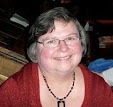It is always wonderful to read a book that gives you an insight into events or people that you only know on the surface. Such was my knowledge of Hedy Lamarr - she was a glamorous movie star and that was the extent of it. I am appreciative of this fictionalized biography by Benedict to give much more appreciation of the life of a complex and intelligent woman.
Born Hedwig Kiesler in Vienna, Austria in 1914 to a Jewish father and Catholic mother, she was always intrigued by the theatre and acting. when The Only Woman in the Room, opens, Hedy is finishing a performance of Sissy, a play about Empress Elisabeth of Austria. In the audience was Fritz Mandl who for one reason or another became enamored of her. He asks for her hand in marriage, an action which her father cautiously approves.
The marriage in which Hedy found herself was a nightmare. Although Mandl was a rich and powerful person in Austria and he lavished gifts and gowns on her and they lived in stately homes and castles, he kept her as a prisoner. She was privy to confidential meetings with the likes of Mussolini and Hitler and at once realized the political leanings of Mandl. She methodically planned an escape, which failed. But she was not easily defeated and eventually managed to flee to London and then the United States. A fortuitous meeting with Louis B. Mayer brings her a contract with MGM and to the movie star with whom we are all familiar.
As tensions in Europe grow and World War II ensues, she feels for the people that she left behind. Reading of the sinking of the SS City of Benares, she vowed that she needed to make a difference in the world. The steamship was used to evacuate children from Germany to Canada and was sunk by a German torpedo. Remembering the discussions from her days with Fritz Mandl she and pianist, George Antheil developed a device that could potentially jam the radio frequencies that controlled the torpedoes. They were granted the patent, but the Navy refused to adopt it, mainly because of its invention by a woman. It is interesting to note that it was adopted and eventually used during the cold war on U.S. ships.
The fact that Lamarr was such an inventive and scientifically minded person has been so overlooked is deplorable. Benedict's novel will do a lot to rectify that and also bring to the fore that women can be both beautiful and bright. The ending of the novel brings home the dilemma which she faced
Had I, in the end, become who they already thought I was? To everyone else, I was Hedy Lamarr, only a beautiful face and lissome body. I was never Hedy Kiesler, aspiring inventor, curious thinker, and Jew. Never the self I really was underneath the many roles I’d played on- and off-screen. Or had I used the world’s perception of me as a disguise, a sort of smoke screen to distract them while I achieved my ends? Had I taken the persona to which I’d been relegated and made myself into a weapon against the Third Reich after all, just not the instrument of destruction I’d intended? I wondered if it even mattered what—or who—they thought I was, if I’d gotten my revenge against the European suppressors by funding the Allies tonight and perhaps, along with it, the redemption I’d sought. I had always been alone under my mask, the only woman in the room.
A thoroughly enjoyable read and an appreciation of a woman whose place in history should be recognized for her contributions beyond the acting world.

